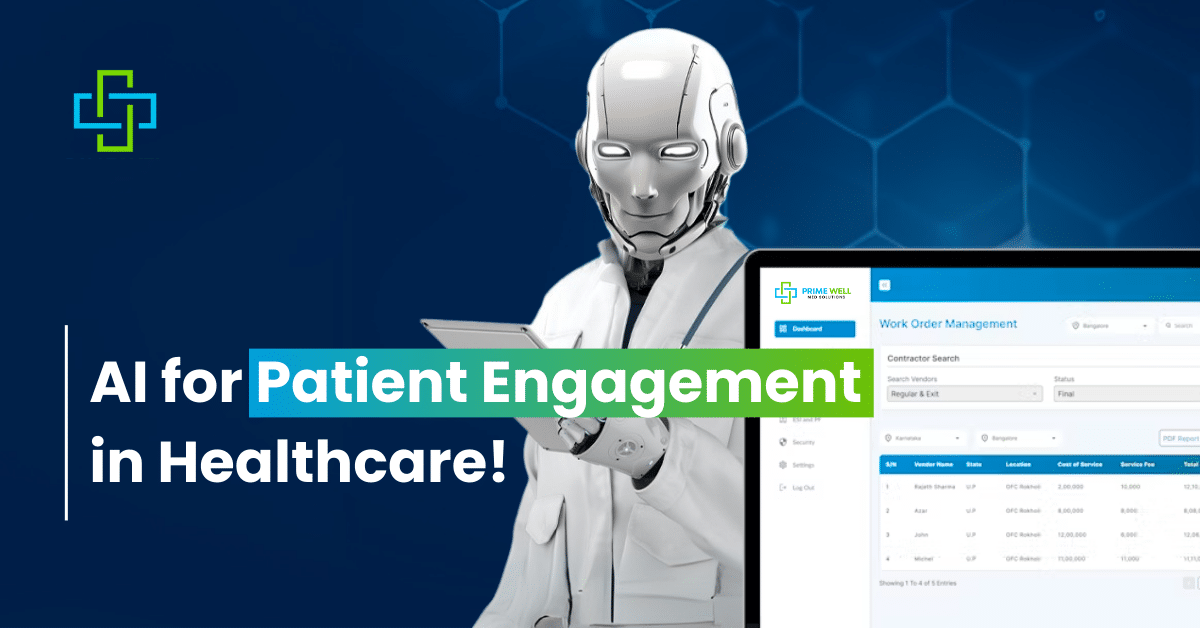Healthcare is starting to modernize and AI for patient engagement is playing a major role in that shift. Patients don’t have to feel like they’re in the dark about their own care anymore. It’s becoming simpler to communicate with doctors with AI tools. Patients can easily grasp treatment options and get the support they need. It’s healthcare that feels more personal and accessible.
AI for patient engagement keeps track of the medication schedule and knows just the right questions to bring up at your next appointment. And it is already a big part of hospitals and clinics worldwide now.
What Makes AI for Patient Engagement So Powerful?
Things really change when tech is used to solve problems for people. Many patients felt confused between visits before. They weren’t sure about their medicines or felt too nervous to ask questions. Now AI for patient engagement solutions helps by giving support and keeping the conversation open.
AI patient software can send reminders, reply to common questions right away, and notice when someone might need more support. It doesn’t follow a set script. It learns from thousands of interactions so the answers get more accurate over time. This means patients can get faster help if no one is available to respond right away.
The numbers show clear results. Hospitals using these systems have seen patient satisfaction rise by more than 30%. In some small studies, patients’ prescribed medication use went from about 50% to nearly perfect. And larger reviews show steady gains of around 7% to 33%. These tools also help patients stay on track with their care and lower the risk of preventable problems.
What are the Different Patient Engagement Tools and What Do They Do?
Several platforms are leading in digital health engagement:
- Epic’s MyChart uses AI to explain test results in simple language patients can understand.
- Cerner’s HealtheLife uses smart tools to share health tips when they matter most.
- Amwell uses AI with telehealth to make online consultations easier for patients.
- Teladoc looks ahead in the data to find patients who may need care before problems start.
Companies like Prime Well Med Solutions use AI patient engagement software to improve patient care. It shows that even smaller companies can compete when they focus on simple innovations and put patients first.
Comparing the Different Patient Engagement Tools
Healthcare organizations consider many things when they think about introducing AI for patient engagement. Whether it’s worth the money or not comes at the top. But return on investment often justifies the money spent initially when they get reduced readmissions and improved outcomes.
- Mobile-first apps like MyChart Mobile and Epic Haiku reach patients right on their phones. They get more use and attention than web-only tools.
- Text-based tools like Klara and TigerText use simple, chat-style messages that anyone can handle. They get the fastest replies, even from older patients.
- Full platforms like Salesforce Health Cloud and Microsoft Healthcare Bot put many tools in one place. They take more setup but give patients the widest range of help.
Patient Engagement That Actually Work
A lot of successful patient engagement services share common characteristics. They prioritize ease of use above flashy features. Patients want simple and clear communication. No one wants complicated interfaces that require training to use.
Timing matters a lot as well. Good services share information and reminders at the times when patients are most likely to see them. AI helps in this by studying each person’s behavior patterns.
AI for patient engagement support care instead of getting in the way of daily healthcare work. Sharing engagement data directly with provider systems makes things easier for both patients and doctors.
First-Hand Results from Clinics All Around the World
1_ At Mount Sinai Hospital in New York, researchers introduced an AI alert system designed to detect early signs of clinical deterioration in hospitalized patients. The system analyzed a wide range of patient data to generate alerts for nurses, physicians or rapid response teams.
Results:
- Patients in units where alerts were sent were 43% more likely to receive timely care.
- The AI algorithm was trained on patient monitoring data and was shown to outperform traditional tools like the Modified Early Warning Score.
2_ In 2024,University Hospital Basel tested an AI appointment management system that predicted no-shows and optimized scheduling. The system analyzed past appointment data, patient demographics and behavioral patterns to flag patients at risk of missing visits.
Results:
- +0% increase in attended appointments per month
- 6% increase in capacity utilization
- Patients at high risk of missing appointments were outreached (like reminders and rescheduling support)
What AI for Patient Engagement is Going to Look Like in a Few Years?
Looking ahead, AI for patient engagement will become even better. Incorporating healthcare AI with smart watches or home monitoring equipment will create continuous feedback loops between patients and care teams.
Mental health support will expand significantly. AI for patient engagement will help patients manage anxiety, depression and chronic stress between therapy sessions. The technology will also become more accessible. The simplified interfaces designed for elderly patients and those with limited digital literacy will help a lot with that.
The Last Word
AI for patient engagement is quickly becoming one of healthcare’s most promising developments. These tools are improving the way people communicate with their doctors and are helping patients feel more understood and supported. The result is stronger connections, smoother coordination and a system where both patients and doctors benefit. As the technology continues to grow, the focus is shifting toward keeping patients actively involved at every step. This is to make healthcare more responsive and more effective.





